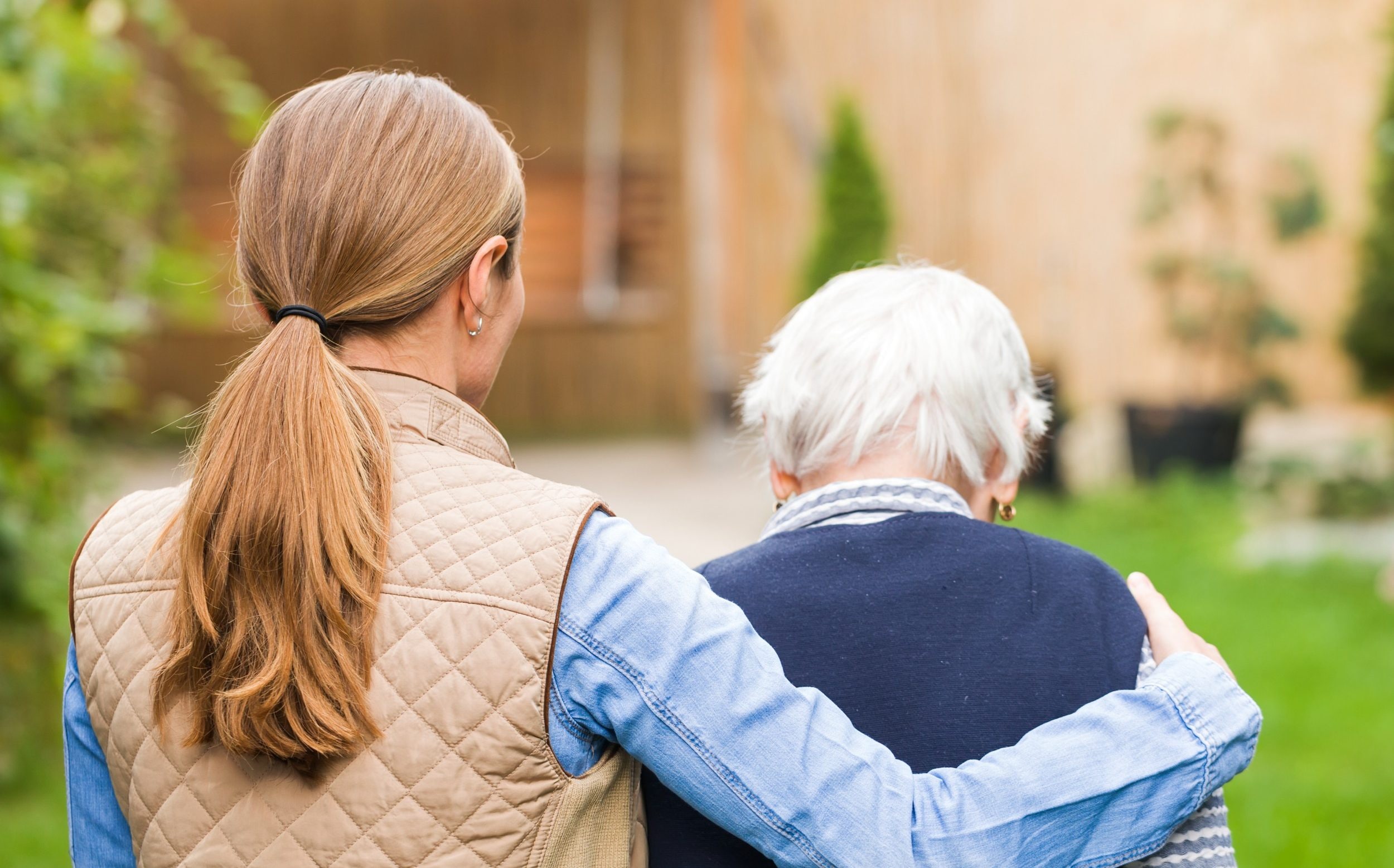
HOW OVER-50S ARE BEING SQUEEZED BY ELDERLY PARENTS AND STRUGGLING KIDS
The first thing Ann Jeffrey does when she wakes up in the morning is check that her mother is still breathing.
Jeffrey’s mother, who is 84, was diagnosed with dementia in 2016. Jeffrey was working for a recruitment agency at the time but cut down her hours to look after her mother. Then the pandemic hit. Jeffrey moved in to care for her full-time. Two months later, she told her boss she could not come back to work.
Now, the 58-year-old cares for her mother seven days a week. Her mother cannot move from the waist down and has to have her food blended before she can swallow it.
“If I went to work it would be like leaving a three-month-old baby in the house on their own,” says Jeffrey.
She herself is under great strain. “Mum doesn’t get violent, she doesn’t shout. But mentally, it’s soul-destroying.”
Jeffrey’s situation is becoming all too typical. As Britain’s population gets older and sicker, more people are being forced to provide informal care for family members. The bulk of this burden is being shouldered by people who are over the age of 50.
This age group are often caring not only for elderly relatives but also children and grandchildren. Some are grappling with their own health problems.
This trend is not just a social issue – it is becoming an economic problem for the country too.
New analysis by the Institute for Employment Studies (IES) for The Telegraph suggests this change is at the heart of the rise in economic inactivity amongst older workers.
Nationally, the number of people providing informal care has surged by 700,000 since the pandemic to a six-year high of 5.2 million in 2022-23, according to the Department for Work and Pensions (DWP)’s Family Resources Survey.
Britain was already in the midst of a health and social care crisis before Covid-19 struck and the pandemic only worsened the problem.
People with long-term health conditions suddenly had much more difficulty getting check ups and appointments, says Caroline Abrahams, charity director at Age UK. Covid also made people ill. Lockdowns meant older people became less mobile.
The social care system is grappling with a staff and funding shortages just as demand is rising. It is people just approaching retirement who are most likely to be picking up the pieces. Sixteen per cent of people aged 55 to 64 are now providing informal care, up from 13pc pre-Covid.
At the same time, worklessness in this age bracket has surged. IES analysis of DWP data shows that 237,000 55 to 64-year-olds dropped out of the workforce between 2018-19 and 2022-23.
The main reasons given for this rise in economic inactivity were early retirement and long-term sickness, but IES analysis also suggests a clear link with caring responsibilities.
Of the 237,000 who dropped out of the workforce, 131,000 were carers.
When earlier retirees are excluded, the rise in economic inactivity was driven almost entirely by people who were carers.
The DWP insists there is “no evidence in our data that shows an increased proportion of people becoming economically inactive due to caring responsibilities”.
It is true that most of the carers who left the workforce said they were doing so not because of their care responsibilities but because they were long-term sick themselves. However, experts say the two are often connected.
“There is a really significant health strain with this responsibility,” says Emily Holzhausen, director of policy and public affairs at Carers UK. “In terms of what people then say is the primary reason for them leaving work, well if it makes you ill, then you’ll say you’re leaving because you’re ill.”
More than three-quarters of carers (79pc) feel stressed or anxious, according to Carers UK. Nearly half (49pc) feel depressed, while 54pc said their physical health had suffered as a result. More than one in five (22pc) have sustained injuries from caring duties.
“People strain their back and shoulder muscles because of lifting and moving people,” says Holzhausen.
Jeffrey fell ill for several months at the start of the year.
“It was pretty much a throat infection, a nose infection and an ear infection all at the same time. The doctors did put it down to stress.”
She adds: “I was trying to give up smoking and even my doctor said ‘don’t be stupid, this is not the time, you cannot put more stress on yourself’. If I can feel the tension building up slightly, I will take myself upstairs and I’ll have a cigarette and count to 10 and start again.”
IES director Tony Wilson says: “Is this contributing to higher economic inactivity amongst workers in their 50s? I think it’s almost certainly the case that it is.”
Aside from the health strains, there is a question of time. The vast majority of people aged 55 to 64 who have become carers since the pandemic are now caring for people for at least 35 hours a week, IES analysis shows.
“There is a huge employment penalty for longer caring hours,” says Wilson.
Chancellor Jeremy Hunt has made encouraging early retirees back to work one of his key priorities as part of efforts to address rising inactivity rates and boost growth. Many are now going back into the workforce.
Conversely, the number of people who are held back by caring responsibilities is only likely to rise.
“We have an ageing population and they are spending more years in ill health,” says Alice Martin, head of research at Lancaster University’s Work Foundation.
“There is going to be a greater need to look after these people. That is a real factor that is going to be pulling people, usually women, out of paid employment.”
A government spokesman said: “Our reforms have helped over-50s become one of the fastest-growing parts of the workforce with almost 100,000 people aged over 50 added to company payrolls in the last year and we have recently doubled the number of 50PLUS champions in our Jobcentres so even more older people can remain in and return to work.”
The age at which people have most caring responsibilities is also the age at which they are often starting to develop their own health problems. A third of people aged 55 to 64 have a limiting health condition, says Wilson.
People in their 50s are also often grappling with care demands on multiple fronts.
“It’s not unusual to find people in their 50s and 60s who are having to look both ways. Their own parents are not well, but they’re also having to do more to support their own grandchildren or sometimes their own children, who might in some cases still be living at home because it’s so difficult for people to get on the housing ladder,” says Abrahams.
Nearly 700,000 informal carers aged between 45 and 64 have these “sandwich” responsibilities, according to IES analysis.
Holzhausen wants the Government to invest more in social care to reduce the burden on families supporting their relatives and keep as many of them in work as possible.
For Jeffrey, finding someone to look after her mother for a day while she went to her late aunt’s funeral was incredibly difficult. Short-term nursing home care is almost non-existent. Her only option for temporary care was to book a minimum week’s stay at a care home, which costs £1,500.
Jeffrey knows she has to get back to work: “I don’t have a proper pension plan.”
But her time out of the labour force has affected her. “I’ve been stuck here for so long, I can’t go back into an office job. I am so out of it with technology, I wouldn’t be taken seriously at all.”
Instead, she hopes to get a job in the care industry. “I think if I could do this for somebody else, I wouldn’t have the stress of the emotional attachment that I’ve got with mum. I think I could help somebody else in their final days.”
2024-05-07T05:04:39Z dg43tfdfdgfd











